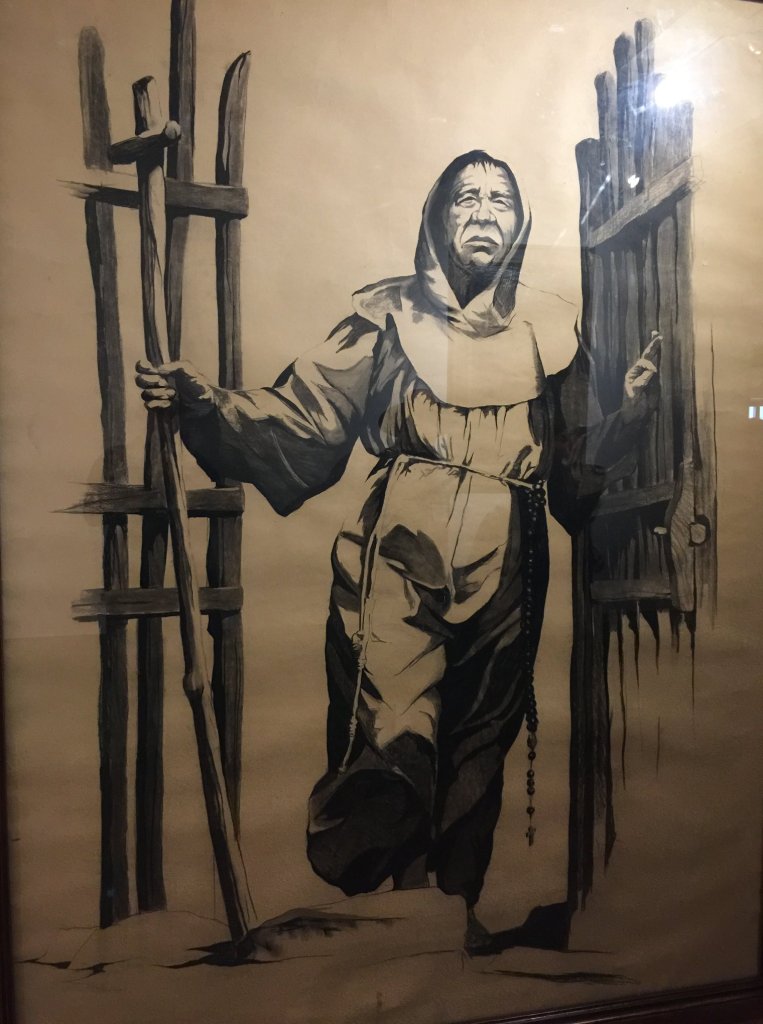The year 2020 was a tough one, even for a Catholic saint. Junípero Serra, the 18th-century Spanish priest who Pope Francis called “the evangelizer of the west in the United States”, has been taking it in the chin lately. Vandalism of public statues of Junípero Serra have taken place by angry mobs and desecrated on Catholic church property. The latest attack was a character assassination of him by the San Francisco (California) Board of Education’s School Renaming Committee calling him a “Colonizer and slaveowner” (see Jan. 28, 2021 Mission Local article here). No evidence was provided. No historians questioned. This begs the question, will 2021 be any better for Serra? Things looked up for friends of Serra when the head of the man who brought revolutionary ideas to this part of the world was taken off the proverbial chopping block by the San Francisco Unified School District. However, the executioners in San Diego were successful in stripping his name from a public high school. Little did they know that they did so almost to the day 248 years after Serra demanded justice for indigenous people (on March 13, 1773, after Serra’s lobbying, Viceroy Antonio María de Bucareli y Ursúa signed into law the Representación).

There is no denying that cultural exchange came at a cost. Pre-contact with Europeans, the California Indian population was estimated to be 300,000. Historian James A. Sandos argued in Converting California that the overall population dropped 21 percent by 1830, just before Mexico took possession of California. Regarding the Indians in the area of mission influence, he notes from 1770-1830, the population declined from 65,000 to 17,000, a loss of 74 percent. Scholar Barry Pritzer estimates by the end of the 19th century there were 15,000 California Indians. Therefore, the near annihilation of the California Indians came during the Gold Rush from the 49ers and with the blessing of the government of California. Serra, wrongly, is the poster boy for all of this to some.
Serra did not want pueblos, because he knew the history of the encomienda system. He wrote to medical authorities asking how to help sick Mission Indians (the vaccine for smallpox was introduced in 1796 by Jenner and the horrid disease was not even eradicated until December 1979). Serra, nearly dying along the way, went to the viceroy in Mexico City to lay out his frustrations regarding the maltreatment of natives by soldiers. On March 13, 1773, Serra and Viceroy Antonio María de Bucareli y Ursúa signed into law the Representación that included disciplinarian measures for Mission Indians be put in the hands of the priests, not the military. Serra also taught the Mission Indian in Spanish due to the fact that they came from tribelets that spoke different languages. What he wanted for them to believe about each other was what he believed about them, as captured in his February 26, 1777 letter to Father Francisco Pangua, O.F.M., his guardian in Mexico City: “They are in places one cannot visit without walking a long distance and sometimes going on hands and feet, but I put my trust in the Lord, who created them.”
When it comes to Serra, the Catholic Church is confident of his noteworthiness.
His life has been studied and researched with a fine-tooth comb. The ecclesial court proceedings to question Serra’s holiness began on December 12, 1948. The evidence brought forth were 2,420 documents (7,500 pages total) of Serra’s writings, 5,000 pages of materials written about him from those who knew him, and testimony of people inspired by his life. A summary of findings would be collected into the Positio (position paper)—Serra’s position was 1,200 pages. The evidence propelled Pope Francis to canonize Serra on September 23, 2015 in Washington, D.C.
I propose to those who wanted Serra High School’s name changed rename it after a significant California Indian. Pablo Tac comes to mind. Never heard of him? That is a shame. His story should be taught to every school child in California. His writings are the earliest from a California Indian, written in Rome while a seminarian. The greatest recommendation I can make is to read online (free) the Writings of Junípero Serra to better understand what his vision was, motivations were, as well as his challenges, dreams, and successes.
_________
Christian Clifford is the author of books about Catholic Church history in Spanish and Mexican California. His latest, Pilgrimage: In Search of the Real California Missions, is about his 800-mile walk of the California Missions Trail. He can be reached at www.Missions1769.com.
_________
Image: Father Junipero Serra by Paul Whitman, 1933.